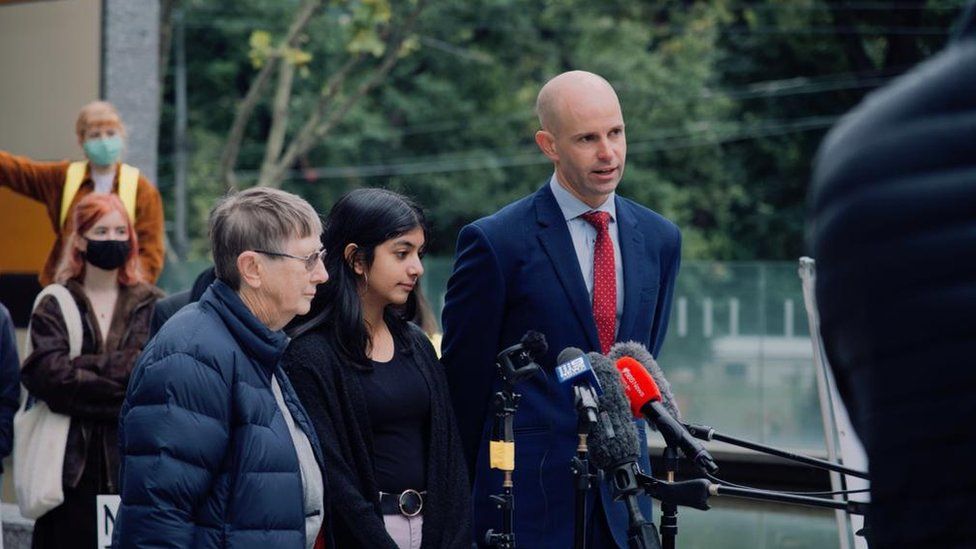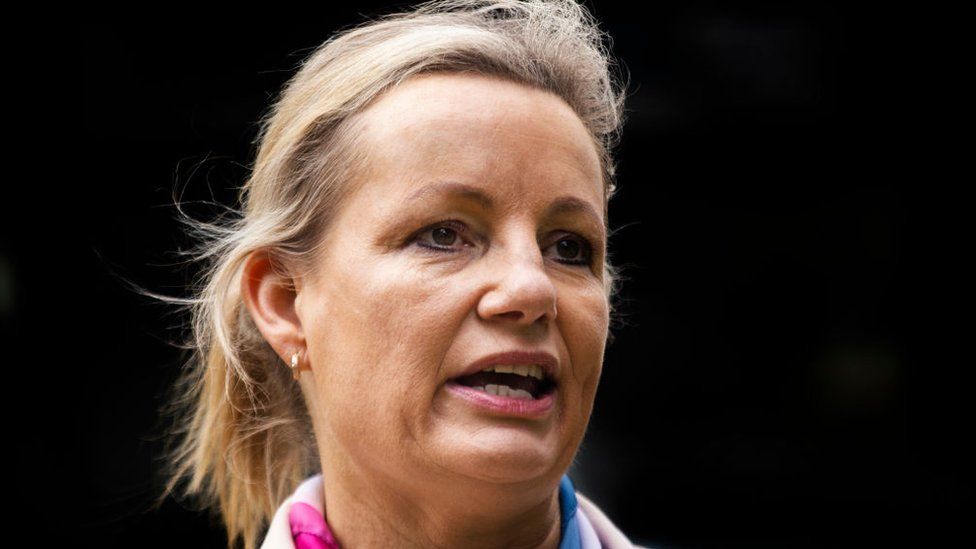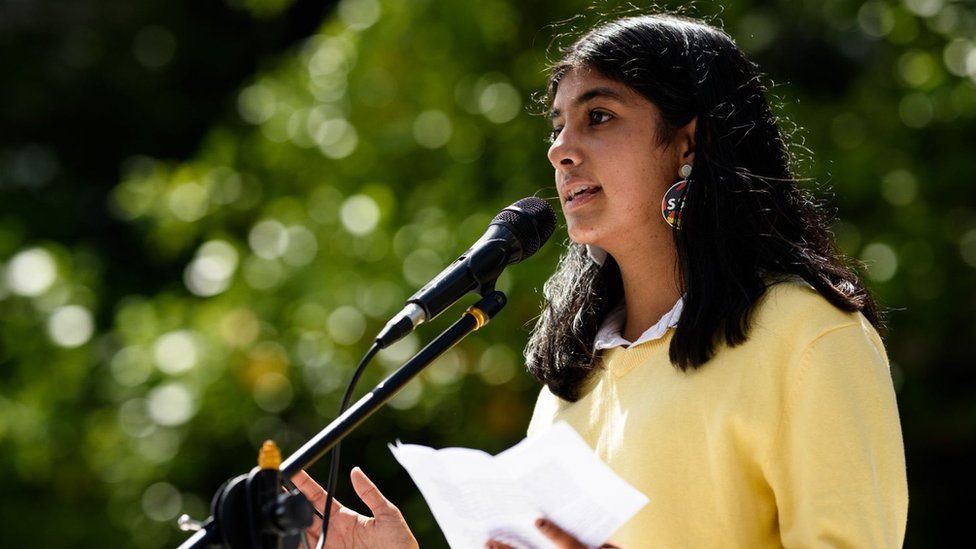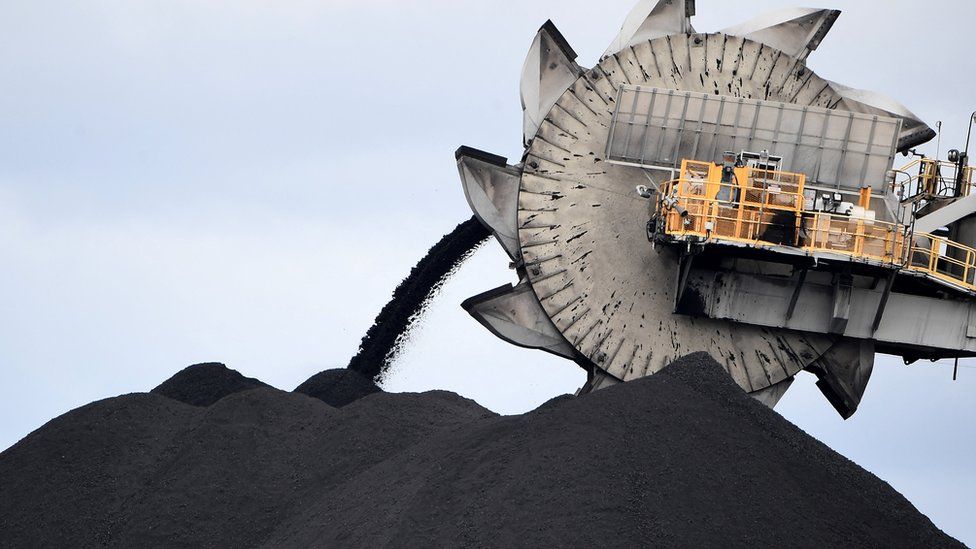WIRED
-
Grace HuckinsWhen a shocking storm or heat wave happens, attribution scientists are on
the case, helping to show the public the real-life effects of global
warming.

|
Photograph: Brook Mitchell/Getty Images
|
In June 2003, while he was still a
graduate student, Noah Diffenbaugh attended a scientific conference with his
adviser in Trieste, Italy.
That month, the average daily high temperature there was 88 degrees Fahrenheit;
typically, highs in Trieste at that time of year are about 10 degrees cooler.
“People were saying, ‘This is really hot. This is really not what usually
happens,’” he recalls.
Diffenbaugh, now a climate scientist at
Stanford University, had caught the leading edge of the 2003 heat wave—the
hottest European summer since the 16th century. (That record has
since been broken
multiple times, most recently this past summer.)
It was hard not to link the near-unprecedented temperatures, which are thought
to have
killed over 70,000 people
across Europe, with the inexorable creep of climate change. But back in 2003, no
scientist would stand up to make that connection. “‘It’s impossible to ever
attribute any particular event to global warming’—that was the predominant
public stance at the time,” Diffenbaugh says.
According to Daniel
Swain, a climate scientist at UCLA, there were some good reasons for this
reticence. Unseasonable weather sometimes happens by chance, and scientists
worried that tying weather too closely to climate would allow climate deniers to
use cold weather as ammunition.
In 2015, US senator James Inhofe (R-Oklahoma) did just that when he
brought a snowball onto the Senate floor
in an attempt to disprove climate change.
But, Swain says, the idea
that weather and climate can be separated is illusory. “Climate is nothing but
weather in aggregate,” he says. The global mean temperature—which, according to
the IPCC’s Sixth Assessment Report, has
already risen by over 1 degree Celsius—is a convenient scientific construct.
Averaging temperature
measurements over the entire world helps scientists ignore the random
vicissitudes of weather when determining the overall trajectory of climate
change.
But it’s not global mean temperature that kills people. People die when
floods overwhelm urban infrastructure, or when
unheard-of
temperatures
and
humidities
persist in specific locations for days on end. “No human, no ecosystem on Earth,
will ever experience the global mean temperature,” Swain says.
So in 2004, a group of scientists led by Peter Stott at the United Kingdom’s
national weather service
decided to quantify
the extent to which climate change had contributed to the 2003 heat wave.
“It is an ill-posed question whether the 2003 heat wave was caused,
in a simple deterministic sense, by a modification of the external influences on
climate,” the group wrote in their subsequent paper, “because almost any such
weather event might have occurred by chance in an unmodified climate.”
Instead, they asked a different question: How much more
likely had
greenhouse gas emissions made the deadly heat wave?
Using climate
models, the team simulated what the world would look like with and without those
emissions. Essentially, they simulated weather conditions on two alternative
Earths—one in which humans had pumped enormous volumes of carbon dioxide and
methane into the atmosphere, and one in which they hadn’t. And in the world with
these emissions—the world we live in—a record-breaking European summer heat wave
was, on average, about four times as likely.
The 2004 paper was the
first major example of “extreme event attribution” or “attribution science,”
which has since burgeoned into an entire subfield. These studies can’t always
say
why climate change might make extreme events more likely—many of
the equations used in climate models are complex and nonlinear, so small changes
can have major effects, and it is often difficult to link the two.
But by running models numerous times—seeing how often extreme events occur first
when industrial emissions are included, and then when they are
removed—scientists can make overall statements about how much more likely
human-caused climate change has made a specific type of weather event, even
without explaining precisely how that may have happened.
“We know very well how much greenhouse gas has been put into the atmosphere
since the beginning of the Industrial Revolution,” says Friederike Otto, a
climate scientist at Imperial College London and co-leader of
World Weather Attribution
(WWA), which she founded in 2014 with Geert Jan van Oldenborgh, a climate
scientist who passed away earlier this year. “We can take it out of the
atmospheres of climate models, and so simulate a world that might have been
without climate change.”
Today, the results of attribution studies
regularly make headlines, such as when scientists at WWA, who work to get their
conclusions out in the immediate aftermath of an extreme event, reported that
the 2021
Pacific Northwest heat wave
would have been
nearly impossible
without the influence of climate change.
Their studies have also found that climate change made a whole host of extreme
events more likely—like this summer’s
flooding in Germany, the devastating 2019-2020
Australian bushfires, and
two
separate
2019 summer heatwaves in Europe. (Some events, however, remain outside of the
scope of extreme event attributions—tornados, for example, remain a “black box,”
according to Swain.)
To the people who experienced these events
firsthand, such conclusions can provide powerful proof of the urgency—and the
catastrophic consequences—of global warming. “It’s critically important to
humanizing climate change,” says Swain, who divides his time between research,
including attribution studies, and climate communication via his popular
Twitter
feed and
blog.
This intimate connection with the needs and concerns of the
general public makes extreme event attribution unusual among the sciences, where
public communication often takes a backseat.
“Our motivation for why we do what we do is to provide the public with the
information they need to make choices for their future,” says Deepti Singh, a
climate scientist at Washington State University Vancouver who studies events
like
extreme rain in India
to understand the on-the-ground effects of climate change.
Today,
attribution studies use two main sources of data: climate models, which can
predict what weather
might look like today had climate change never
happened, and historical data, which show what the weather was
actually like before it kicked into gear.
Taken together, they can help researchers quantify how often, under each
condition, things like daily temperatures would exceed a particular baseline, or
monthly rainfall would be below some threshold. As long as an extreme event can
be characterized in terms of those kinds of constraints, it can in theory be
analyzed with the techniques of extreme event attribution.
But attaining that data can present a formidable challenge: Climate models take
an enormous amount of computational power to run, and they have to be
fine-grained enough to represent the event that scientists are interested in.
“You don’t only need climate models that have a high enough resolution, but you
also need to be able to run them many times, so that you can actually get
statistics of not only average climate, but also extreme events,” says Otto.
“That used to be prohibitively expensive. But now, computational power is much
cheaper.”
Recently, scientists have started using data repositories
to share the results of their simulations publicly, which has also made the task
easier—researchers aren’t waiting days or weeks for their computers to produce
results that may already have been generated in someone else’s lab.
And to make their results as reliable as possible, Otto and others try to use
the predictions of many different climate models in their studies—otherwise,
their results might just reflect the particularities of a single one.
But
the challenges aren’t just technical—sometimes, public communication and
scientific culture can be uncomfortable bedfellows. When she cofounded WWA, Otto
and her colleagues encountered criticism from the scientific community because
they wanted to release their results on such a quick turnaround, without
engaging in the peer review process.
The group typically shares their results two weeks after an extreme event; it’s
not possible to complete peer review in that time. “When we started doing this,
people were saying, ‘You can’t do this. This is not how science works. This is
not the scientific method,’” she says.
So WWA did what they
considered the next-best thing—they outlined their study protocol in
excruciating detail, from how they choose which events to study to their
communication strategy, and
published it in a peer-reviewed journal
to show that their procedures have passed muster with members of the climate
science community.
Another tricky area is what’s called “scientific
conservatism” (which is not to be confused with political conservatism).
Scientists don’t like to depart from established precedent unless there is
compelling evidence to do so.
Experimenters usually work from a “null hypothesis,” which often takes the form
of a default assumption that there’s no relationship between the things being
studied (in these cases, climate change and a particular weather event). They
require a high burden of proof to reject that hypothesis. Often, then,
scientists will start attribution studies with the assumption that climate
change
didn’t play a role and look for a reason to change their
minds.
Conservatism helps to make academic science slower and more
deliberate—if there isn’t enough evidence to make a claim today, perhaps there
will be enough a few years from now. In essence, it makes false negative results
more likely and false positives less likely.
But for Swain, there
are real risks to these false negatives in attribution science. “There is still
some reticence to make bold claims about these things, even when I think the
evidence does justify it,” he says.
A single study with a negative result, if it reaches a broad audience, could
make some people less inclined to take action against global warming.
Still, attribution scientists take numerous measures to avoid overstating how
important climate change was to a given event. They look at many kinds of data
from multiple sources, and often use mathematical tools that are more likely to
underestimate than overestimate the role of climate change.
And that’s for good reason: In a field focused on communicating with the public,
trust is an invaluable currency, says Leo Barasi, an expert on public opinion
and climate change who works with researchers and campaigners.
Openly communicating negative results can also highlight just how important and
striking the positive results really are. “It’s really important to quite
publicly, openly, and proudly talk about” negative results, Barasi says.
And
while it’s difficult to know for sure how much extreme event attribution has
moved the needle of public sentiment on the climate crisis, Barasi thinks it
plays an important role. In 2018, people throughout the Northern Hemisphere
endured extreme summer heat, and
numerous
studies
found that climate change had made those heat waves more likely.
In
Japan, those temperatures would have been almost impossible without the influence of
climate change, according to one
study. Simultaneously, the public discourse underwent a noticeable shift—in both the
US
and the
UK, polls showed that concern about climate change rose in late 2018.
While this time period also coincides with the emergence of
Greta Thunberg
on the international stage, Barasi believes that the extreme weather likely also
contributed. “That sort of firsthand experience of an extreme weather event,
combined with the very widely accepted credible science around it, I think was
really important,” he says.
Much of the power of extreme event
attribution comes from its ability to address the firsthand experience of people
suffering through specific heat waves or floods—their hyperlocality. But this
also has its downsides.
Most attribution studies look at events in the Global North, says Roop Singh, a
climate risk adviser for the Red Cross Red Crescent Climate Center. “Scientists
have, of course, their own interests, and they’re interested in what's happening
in their own backyards,” she says.
But extreme weather can have the
most dire effects in precisely the areas that receive the least attention.
“There are communities around the world that are more dependent directly on
natural resources, they’re more exposed to weather and climate conditions,”
Deepti Singh says.
These disproportionate effects have inspired Singh to undertake research focused
on her home country of India, where poor, rural populations are particularly
vulnerable.
Slowing climate change is important in mitigating those
effects—but addressing the other factors that contribute to them, like poverty
and underdevelopment, is more likely to make the crucial difference in saving
lives and livelihoods.
“The fact that heat waves are so deadly, for example, is because we don’t care,
as a society, about the poor people in bad housing with underlying health
problems,” Otto says. “It’s not because of climate change, per se.”
These
effects depend on structural issues, not to mention a host of contingent
factors—a heat wave will be more deadly in a retirement community than a college
town, for example. So it can be difficult to link climate change to the concrete
effects that most matter to people. But scientists have started to make
progress.
Recently, for example, Diffenbaugh
published a study
linking climate change to financial costs from reduced crop yields. Another
study out this year
concluded that, across the world, 37 percent of heat-related deaths can be
attributed to climate change.
“Impacts happen because of the context
in which a disaster happens,” Roop Singh says. “Extreme event attribution starts
the conversation. But in order for us to really answer those questions, we
actually need to do a lot more science.”
Links







